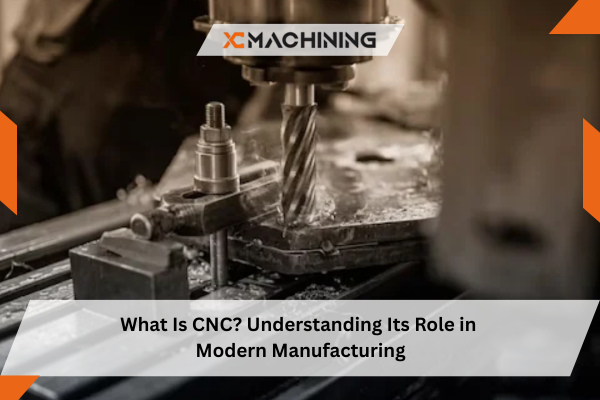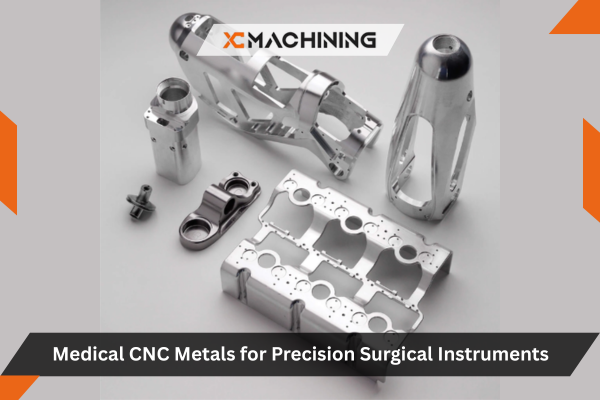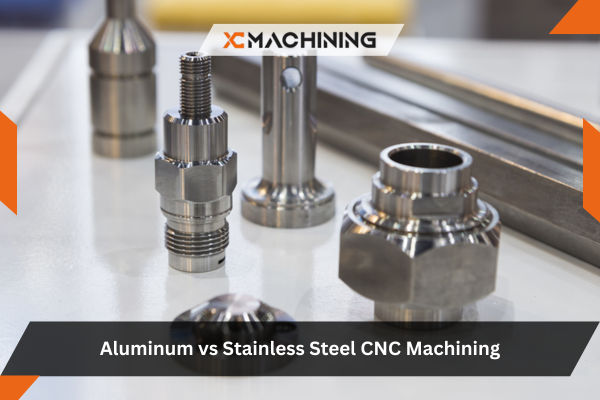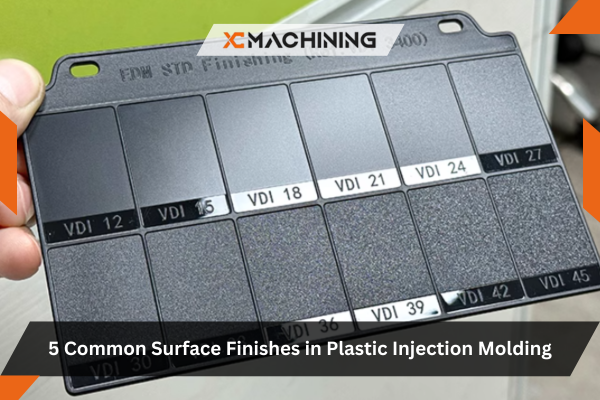Have you ever stared at a precisely cut metal part and wondered how it got such a perfect shape? Maybe you’ve dealt with manual drilling or milling but still ended up with uneven edges. In today’s manufacturing world, speed and accuracy matter more than ever. If your parts aren’t consistent, assembly can be a nightmare, and you risk losing money or time. That’s why so many factories and small shops rely on automation and computer controls to shape their materials. You might be asking: What Is CNC, and how does it solve these issues?
In this blog, we’ll dive into CNC basics: how it works, the different machine types, and the benefits it brings. We’ll also compare it to older methods, explore typical industries that rely on CNC, and discuss helpful tips if you’re looking to adopt this tech. By the end, you’ll see how CNC fits into today’s fast-paced world, transforming raw materials into precision products almost like magic.
WHAT IS CNC: A DEEPER LOOK INTO AUTOMATED MACHINING
If you are thinking what is CNC, we will let you know! What is CNC? CNC stands for Computer Numerical Control. Essentially, a CNC machine uses coded instructions (often G-code) to move cutting tools or workpieces along specific paths. Each axis—like X, Y, and Z—responds to digital commands, guiding the tool. The code also sets speeds, feed rates, and tool engagement depth. Once set, the process repeats identically, giving uniform parts day after day.
By decoupling operator skill from the final part quality, what is CNC technology unlocks consistent manufacturing. People no longer need to measure or eyeball cuts each time. Instead, they rely on carefully tested digital setups. The outcome: extremely precise metal or plastic parts with minimal manual finishing.
Let me know if you’d like any further tweaks
The Birth Of CNC Technology
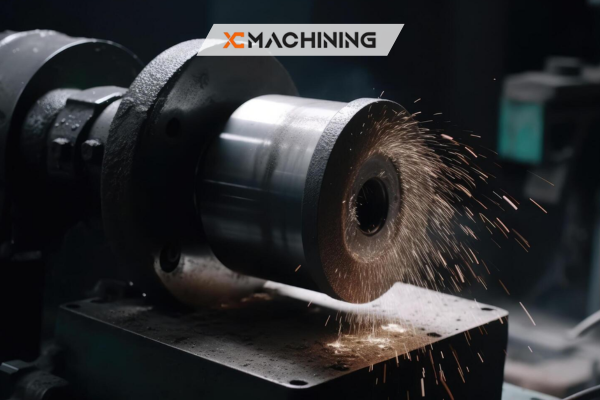
CNC emerged from older computer-driven systems in the mid-20th century. Early versions used punch cards. Today’s setups rely on software instructions, enabling more complex shapes and faster changes. This evolution revolutionized manufacturing worldwide.
Key Advantages Of CNC
You get repeatable precision, reduced labor, and faster turnarounds. Complex shapes become feasible, letting engineers push boundaries. Less manual handling also enhances safety, which is important in busy workshop floors.
Where It Shines
CNC thrives in industries needing tight tolerances, like aerospace or automotive. It also benefits smaller shops, offering advanced capabilities without requiring a full team of highly skilled operators.
Table: Key CNC Features
| Feature | Description |
|---|---|
| Number of Axes | X, Y, and Z commonly, plus optional rotations |
| Programming Language | Often G-code, supplemented by vendor macros |
| Materials Machinable | Metals (steel, aluminum), plastics, wood, etc. |
| Typical Accuracy | Up to ±0.01 mm or better in advanced setups |
| Operator Role | Setup, monitoring, tool changes, troubleshooting |
| Common CAM Software | Fusion 360, Mastercam, SolidWorks CAM, etc. |
This table offers a quick overview of CNC’s core aspects. Each item underscores how these machines produce repeatable results across various materials.
How CNC Machines Differ From Manual Tools
Manually operated lathes or mills require continuous user input to guide the cutter. If your hand slips or you misread a gauge, the part might be ruined. That’s time, material, and money lost. With CNC, these tasks become automated. What is CNC? The software takes a 3D design, translates it into tool paths, and the machine executes each move. Humans set up the material, choose cutters, and hit “start.”
Manual machines require you to tweak every detail for multiple parts. What is CNC? Once you finalize a program, making ten or a thousand identical items is practically effortless. This advantage is huge for businesses chasing consistent product quality or tight deadlines. What is CNC? It’s the key to precision, efficiency, and scalability in modern manufacturing.
Components Of A CNC Setup
If you are still wondering what is CNC, worry no more! A CNC system typically includes a computer or controller, servo or stepper motors, a machine bed or table, and a cutting tool. The operator loads the part design into CAM software, which converts it into step-by-step instructions. These instructions go to the CNC controller, which powers the motors to move the tool or table. Sensors track positions, ensuring each axis stops at precise coordinates.
Common machine types exist, like CNC mills, CNC lathes, and CNC routers. All follow the same basic principle but differ in how the tool interacts with the material. A CNC mill typically rotates a cutting tool while the workpiece is clamped in place. A lathe rotates the material, and the cutting tool remains relatively stationary.
Info: Some setups include built-in measuring probes that verify material location or check part dimensions mid-process, further enhancing accuracy.
G-Code And Other Programming Languages
Here’s your updated paragraph with the keyword added:
G-code is the widely recognized language for controlling CNC moves. What is CNC? It’s a technology where each line, known as a command, can specify position, speed, or an operation (like drilling). For example, “G01 X10.0 Y5.0” might instruct the cutter to move linearly to a certain coordinate. Besides G-code, some machines accept higher-level instructions or vendor-specific languages
Modern software like Fusion 360, Mastercam, or SolidWorks CAM automatically generates G-code from 3D models. This approach means the user focuses on design intent rather than learning code from scratch. However, advanced users often tweak G-code manually, adjusting feed rates or inserting custom macros for complex tasks. Understanding what is CNC can help users make the most of these adjustments and optimize machine performance.
Let me know if you’d like me to refine this further!
Materials CNC Machines Work With
Still, wondering what is CNC? CNC isn’t limited to steel or aluminum. It can shape plastics, wood, composites, and even foam. The main factor is having the correct tooling and speeds for each material’s hardness. That said, metals like aluminum or mild steel are standard in CNC shops, given their broad usage in manufacturing. Harder materials—like titanium or hardened steel—require specialized tooling and robust machine frames to handle the stress.
Plastics cut easily, but you must watch for melting. Slow feeds or coolant might be needed. Wood, though simpler to cut, can leave dust or require vacuum extraction. Regardless of the medium, CNC ensures each pass follows the same path for consistent geometry.
Warning: Cutting extremely hard metals or exotic composites can push some CNC systems beyond their design limits, risking machine damage or tool breakage.
Advantages Of CNC Over Traditional Methods
- Precision: CNC can achieve tight tolerances, often within microns, which is crucial for aerospace or medical parts.
- Consistency: Once programmed, the machine repeats the process identically. Variation from part to part is minimal.
- Speed: CNC can run quickly and even automate tool changes. This results in lower labor costs and faster output.
- Versatility: The same machine can switch from making engine parts to producing custom brackets by simply loading different programs and tools.
These benefits drive countless manufacturers to invest in CNC, from large corporations to small job shops. Even craftspeople producing furniture or jewelry can harness CNC’s reliability for repeated designs.
Different Types Of CNC Machines
- CNC Lathes spin the material, letting a stationary tool shape it radially. Great for cylindrical objects like shafts or bushings.
- CNC Mills rotate cutting tools, removing material from a static or moving block. They excel at shaping flat or contoured surfaces.
- CNC Routers often handle wood or plastic, featuring large tables for bigger sheets. They can also cut aluminum if robustly built.
- CNC Plasma Cutters slice sheet metal with a high-heat plasma torch, ideal for 2D profiles.
- CNC Laser Cutters use a focused laser beam for intricate cuts in metals or acrylic.
Each type suits certain jobs. A shop might operate multiple machine varieties to cover diverse part needs. A metal fabrication business might combine laser cutters for sheets, mills for 3D forms, and lathes for cylindrical tasks.
Steps From CAD To Final Part
- Design: In CAD software, you create a 3D model or 2D shape.
- CAM: Next, you load it into CAM software, specifying cutting strategies, tools, speeds, and feeds. The software outputs G-code.
- Machine Setup: An operator installs the correct tools, secures the material, and loads the G-code onto the machine’s controller.
- Test Run: Sometimes, a “dry run” verifies motion and checks for potential collisions.
- Production: The machine cuts or drills, following the code precisely.
- Inspection: Checking the final part with calipers or advanced measurements ensures it meets specs.
If everything’s correct, the operator can repeat the job for multiple pieces or switch to a new program.
Real-World Industries That Rely On CNC
- Aerospace uses CNC for engine parts and structural elements requiring consistent tolerances.
- Automotive firms machine engine blocks, gear components, and brackets on CNC.
- Medical device manufacturers produce implants or surgical tools.
- Electronics enclosures or custom panels come from CNC shops.
- Even custom jewelry or high-end musical instruments sometimes use CNC for shaping.
Wherever you see precise, repeatable shapes in metal or plastic, chances are CNC had a role. This technology allows designers to push boundaries without forcing workers to carve by hand or rely on less consistent methods.
Info: Many smaller boutique brands partner with local CNC shops for short-run specialized parts, bridging the gap between prototype and large-scale production.
Comparing CNC To 3D Printing
3D printing is additive; you build objects layer by layer. CNC is subtractive; you remove material from a block. Each approach has benefits. 3D printing excels at internal features or complex geometry. However, CNC often wins in terms of speed, surface finish, and mechanical strength compared to standard industrial materials.
If you need a small batch of strong parts quickly, CNC might be superior. If you want complex internal channels, 3D printing could be ideal. Many modern manufacturing setups combine both, using CNC for final finishing or critical surfaces after a part is 3D printed in near-net shape.
Future Trends: Automation And Smart Factories
As technology advances, “What Is CNC” is evolving. Machines get more axes, enabling complex shapes in fewer setups. Robots can load and unload parts automatically, creating near-lights-out factories. Real-time sensors track tool wear or spindle loads, adjusting feeds on the fly to maintain consistent output.
Some shops implement software that schedules jobs across multiple CNC machines automatically, optimizing tool usage and downtime. That means smoother production flows, less guesswork, and fewer operator errors. As these systems mature, they reduce costs while improving speed and consistency. The future of CNC is more connectivity, more data-driven decisions, and increasingly refined precision.
CNC Training And Skills
Still, wondering what is CNC? Though CNC automates cutting, skilled staff remain essential for programming, troubleshooting, and tool selection. A strong CAD/CAM background helps operators choose correct cutting strategies. Understanding materials—like aluminum vs. steel vs. titanium—ensures you pick the proper speeds and feeds. A strong math background helps set offsets or read G-code.
Many community colleges offer CNC certificates. Apprenticeships let learners shadow experienced machinists, bridging theoretical knowledge with real-world practice. Even with advanced software, a well-trained human eye can spot potential collisions or inefficiencies. In short, tech is crucial, but skilled operators remain the backbone of successful CNC shops.
Maintaining CNC Machines
Proper maintenance keeps these machines precise. Regular lubrication of linear rails, checking spindle alignment, and verifying servo motors are essential. Some shops run daily calibration routines with specialized tools. Over time, mechanical wear can degrade tolerances if not addressed.
For example, belts or couplings may loosen, causing slight axis drift. An attentive technician can re-tension them, preserving alignment. Keeping coolant systems clean also improves cutting efficiency and tool life. Replacing worn tool holders or collets prevents runout that leads to rough surfaces or dimension errors.
Suggestion: Log each machine’s maintenance schedule to catch small issues early, preventing costly downtime and part rejects.

CONCLUSION
If you’re still wondering what is CNC and why it’s so important, the answer is clear: CNC stands for Computer Numerical Control, and it revolutionizes the way we shape materials. Instead of manually guiding tools, you rely on computerized commands to move cutters with extreme precision. That means faster production, consistent quality, and the ability to handle complex shapes that would be nearly impossible by hand.
No matter if you’re working on aerospace parts, automotive components, or custom gadgets, CNC helps turn digital designs into real objects with minimal fuss. By blending the right tools, software, and operator expertise, you can tackle challenging projects without sacrificing consistency. If your goals include tight tolerances, high repeatability, and scaling up production easily, CNC technology is often the key.
FAQs About What Is CNC?
What kind of materials can CNC machines handle?
They can process metals like aluminum or steel, plus plastics, wood, composites, and more. Just ensure you have the right tooling and machine power.
Is CNC more expensive than manual machining?
The initial investment can be higher, but it often pays off with faster throughput, lower labor costs, and fewer mistakes.
Do I need special software to create G-code?
Yes. CAD/CAM software like Fusion 360 or Mastercam can generate G-code from your 3D model. Some machines accept custom-coded instructions, too.

